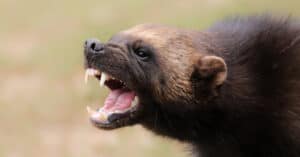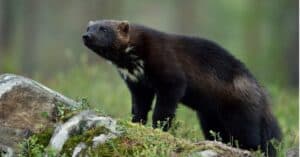Wolverines look like small bears. They have similar large claws and sharp teeth, but they are much smaller than bears, more like the size of a medium dog. They prefer living in snowy areas and can be found in North America and Northern Europe as well as areas in Russia. Since wolverines live in the snow, do they just hibernate most of the time? Not at all, wolverines do not hibernate; they are active hunters all year around! Let’s look at 11 of the most incredible wolverine animal facts!
1. Wolverines can smell 20 feet down in the snow to locate food.
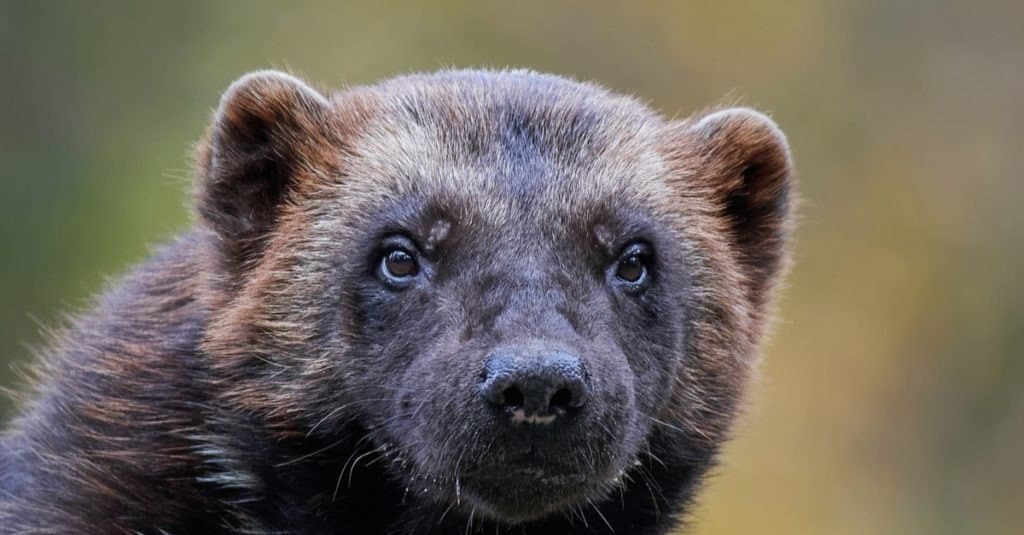
Wolverines can smell animals through 20 feet of snow!
©iStock.com/Denja1
If you stood by a flagpole and looked straight up, that is about 20 feet. Now imagine a wolverine being able to locate a dead caribou after an avalanche at that same distance and then be able to dig it out for dinner! Wolverines have an incredible sense of smell and hearing. They use the senses together to locate prey. They also can detect hibernating animals through the snow and dig them out for food. Talk about rude awakening!
2. Skip the refrigerator: Wolverines use the snow as a freezer to keep large kills cold.
If a wolverine either takes down a large kill or finds one that has been abandoned it will enjoy a large meal. If there are leftovers they will bury the carcass in the snow to keep for later thus preserving the meat, similar to how a freezer keeps our food frozen.
3. Forget fast food, wolverines like frozen food.
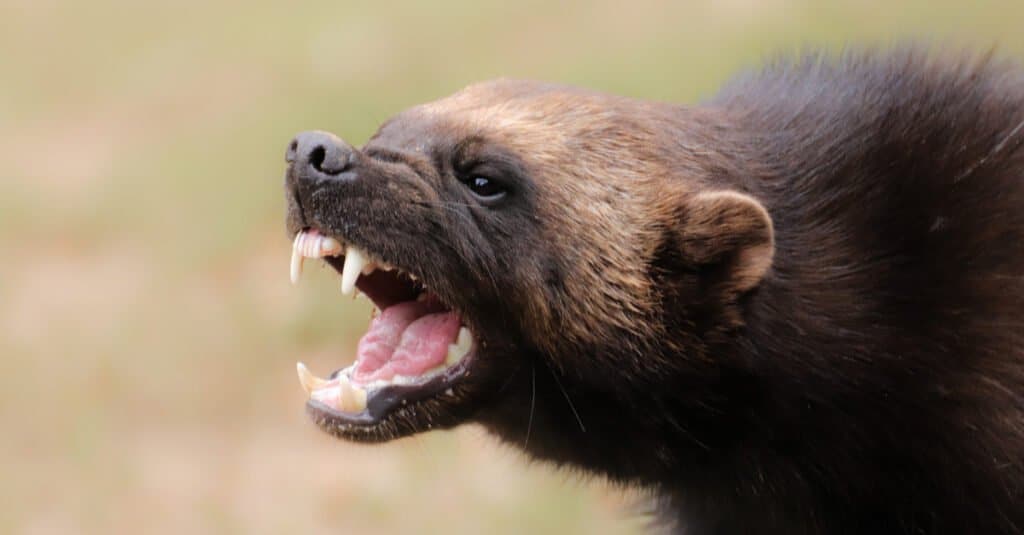
A wolverine showing its teeth
©DenisaPro/Shutterstock.com
The wolverine’s sharp teeth and powerful jaw crushes frozen carcasses, bones and all! In winter, and regions where there is snow, wolverines depend on eating frozen carcasses of deer, reindeer and elk. They don’t just nibble the meat off the bones, they devour all of it.
4. Have built-in snowshoes, their feet spread to twice their size.
Wolverine’s paws spread out when they land on the ground spreading out to twice their size. When the wolverine runs across the snow the paws serve as a snowshoe distributing their weight and keeping them from sinking in the snow. A Wolverine paw print is about the size of a woman’s hand. That may not seem impressive but compare that to the size of a medium size dog print and it is pretty large in comparison!
5. Wolverine babies are born with white hair.
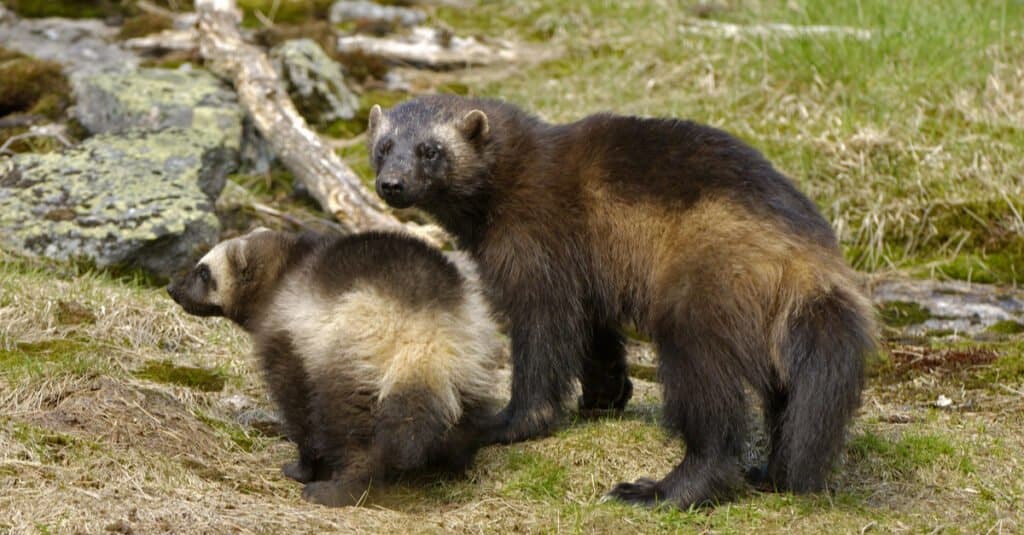
A wolverine mother with her baby (cub)
©Bildagentur Zoonar GmbH/Shutterstock.com
The wolverine has two to three babies at a time and the babies are born with white fur. Since they typically give birth in early spring and live in artic regions, the white fur may serve as camouflage with the snow. Wolverine babies grow up fast, reaching adult size in less than a year and ready to find a mate of their own by the time they are two.
6. Could wolverines be trained as search and rescue animals in the snow?
In Alaska, Mike Miller of the Alaskan Wildlife Conservation Center, has begun working on a program that would train wolverines to locate and dig up avalanche victims. It seems like a good fit since wolverines can locate animals in 20 foot deep snow. He is working with Steve Kroschel, who runs the Kroschel Wildlife Center and has raised wolverines for years. In a test avalanche simulation one of his trained wolverines successfully found and dug out a human volunteer. The focus of the program would be to use the wolverines for locating victims and then use mechanical means to dig victims out. Sounds promising!
7. Is the Marvel Superhero Wolverine similar to real wolverines?

How do wolverine the superhero and wolverine the animal compare?
©Aisyaqilumaranas/Shutterstock.com
No set of wolverine facts would be complete without a comparison to the superhero Wolverine! And there actually are a lot of common characteristics of both Wolverine and wolverines:
- They both are immune to most poisons, like snakes and scorpions.
- They both have an incredible sense of smell and can use this to be keen trackers.
- Both have long, hard, incredibly strong claws.
However, the superhero has some that are not represented by real wolverines. Although real wolverines are tough they can be injured and killed unlike Wolverine who has unstoppable healing powers. If a real wolverine were shot it would also be killed vs. Wolverine who would recover after a period of time. Based on the reputation of wolverines it makes sense that a superhero would be fashioned after one!
8. Their fur coat resists frost!
The fur coat of the wolverine is very dense and can also repel water. Wolverines that live in the cold Artic regions benefit from this because the fur won’t frost over and it keeps them warm and dry. Due to these properties, people will hunt wolverines and use their fur to make parkas and coats. They often line the hood of jackets with the thick brown fur.
9. Wolverines have a large home range, as much as half the size of Rhode Island!
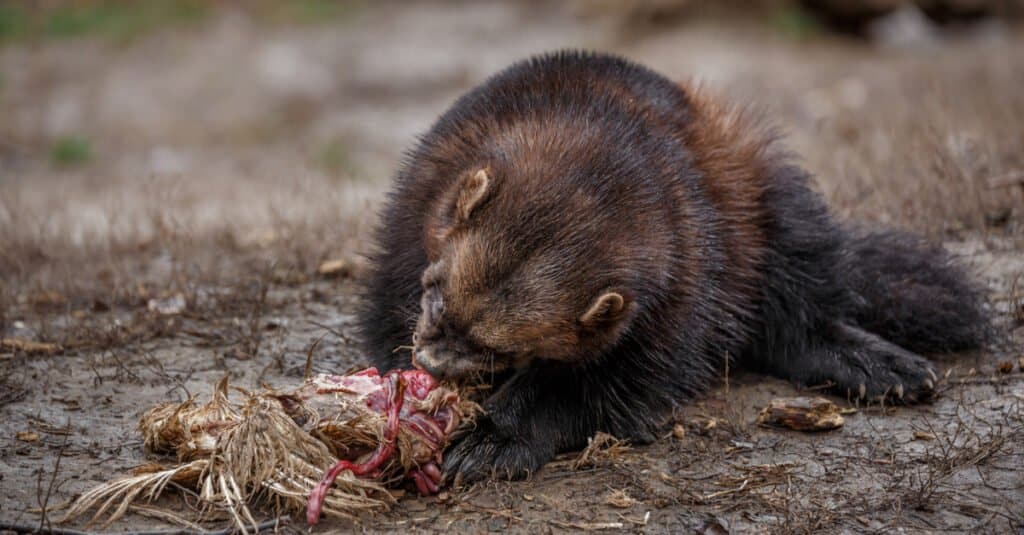
A wolverine eating a meal of carrion
©Josef_Svoboda/Shutterstock.com
Depending on what region they are in wolverines can have a home range of up to 1500km². Compare that to the size of Rhode Island which is 3,144km². That is a lot of area to cover. Male wolverines have a much larger range than females and try to avoid other male wolverines as much as possible. The size of the range depends on the availability of resources as well as the season.
10. Wolverines are nicknamed “Skunk Bear”.
They can excrete a smelly “stink bomb” from their anal glands. Skunks are known to spray when they are threatened but wolverines use their smelly scent to mark their territory. When they feel threatened they are more prone to act aggressively, show their teeth and claw and are not afraid to attack, even larger wolves and bears!
11. “Honey get the door! No wait?” Wolverine caught on Ring video in Utah.
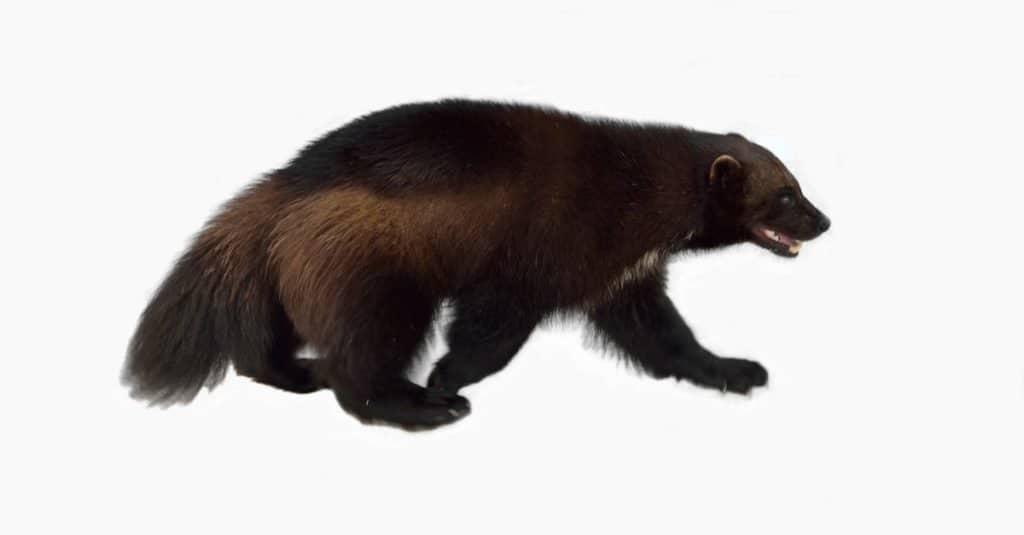
Not the kind of animal you’d want to see in your backyard!
©Popova Valeriya/Shutterstock.com
Two things are interesting about this story. In July, 2021, a male wolverine was caught by a Ring camera outside a home in Layton, Utah. First, wolverines are extremely rare in Utah with only six confirmed sightings since 1979. Second, it is also extremely rare that a wolverine would leave its forested habitat and wander into a populated area. Another wolverine sighting happened near this sight earlier in May and biologist believe it is the same wolverine. They are hoping to catch it so they can tag it and study its habits.
The photo featured at the top of this post is © DenisaPro/Shutterstock.com
Thank you for reading! Have some feedback for us? Contact the AZ Animals editorial team.



